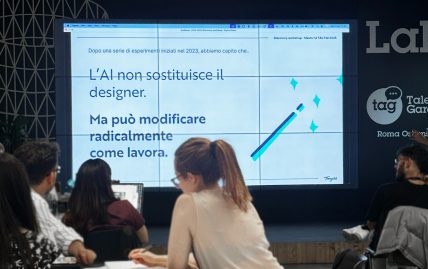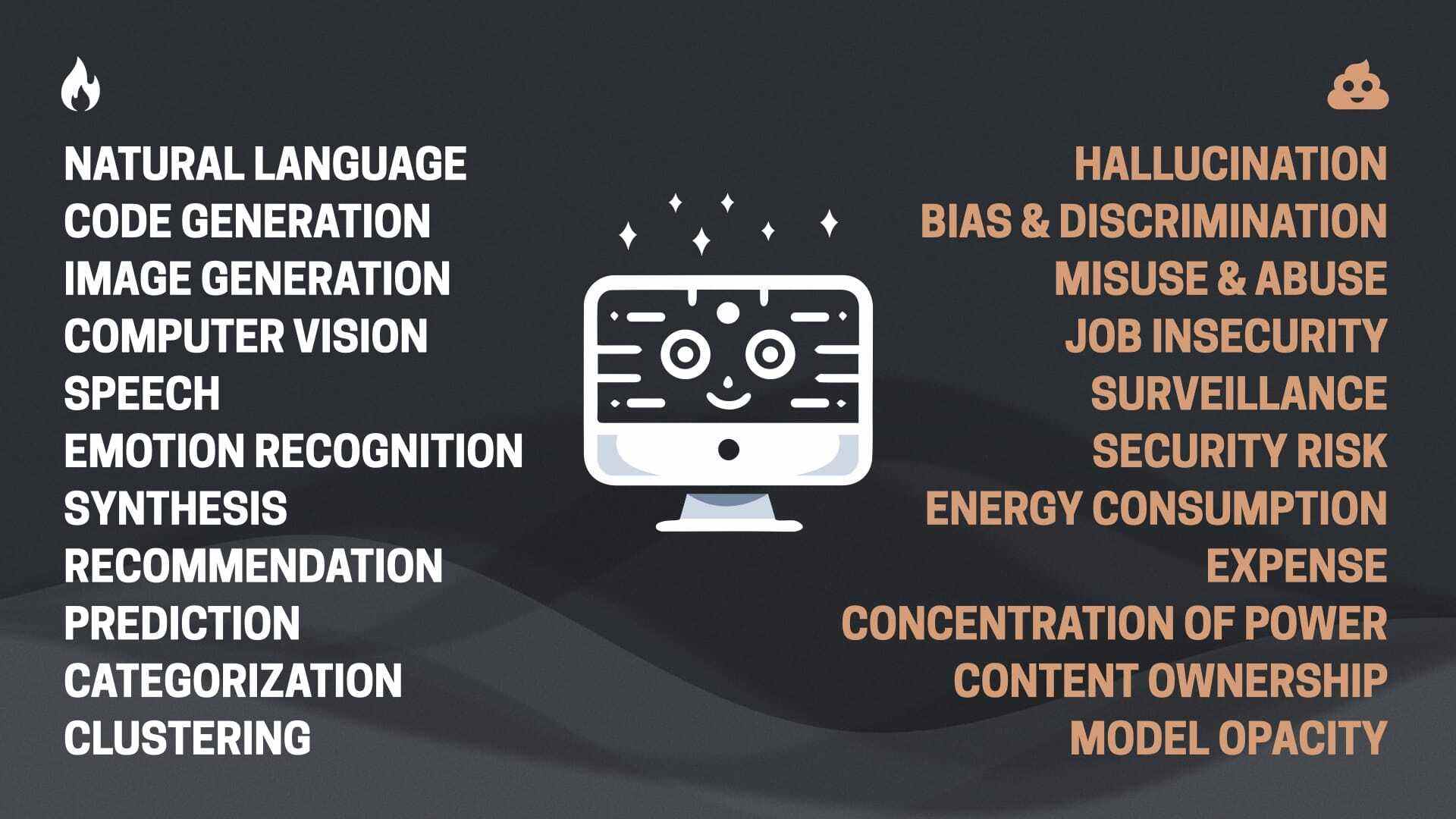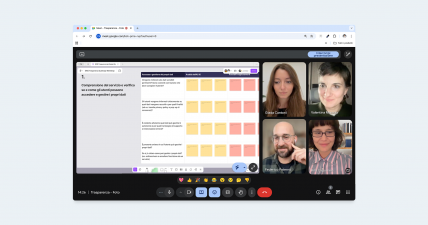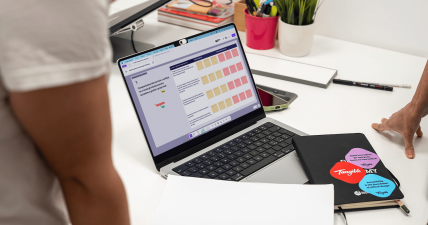Thinking
How AI can amplify (without distorting) design discovery
Artificial intelligence is now part of our daily work, and even during the discovery phase of a project, it’s impossible to ignore. So we decided to experiment and have a little fun. How can AI support design discovery without distorting its meaning?

This article shares the reasoning and reflections that emerged while updating training materials for a workshop on design discovery, and how we explored both the value and the limits of AI as an ally in the design process.
What design discovery is (and why it matters)
As Dan Brown defines it:
A set of activities that produce shared understanding and inform and guide design decisions for a specific project.
In this phase, designers, business stakeholders and users build a common understanding of the problem. The goal is to define directions and priorities through an iterative process of research, dialogue and synthesis.
At the heart of design discovery lie collaboration and listening.
If AI enters this context, it must do so without erasing its complexity.
In our workshop we’ve always valued the “analog” method like direct conversations, mind maps, sticky notes, and real user research.
The challenge today is to understand how to bring new tools into the process without losing depth and critical thinking. After all, it’s not the tools, including AI, that change the game, but how they’re used within the process.

How we introduced AI into the workshop
When we started preparing the new edition of the workshop, our goal was to highlight reflections on how AI can bring value when integrated into the research process, not only in the design phase.
That’s why we wanted to avoid having students focus on how to use AI or what results to achieve by the end of the day. That would have distracted them from our main goal: to show them Tangible’s approach to design discovery.
So the real question became: how can we talk about integrating AI into the process without getting too technical?
And more importantly, what’s the real value of using AI in discovery activities?
At Tangible, we’ve been testing AI beyond discovery for years, in concept and usability testing. It works well in some phases of the process and less in others, as we described in our previous article about lessons learned from integrating AI into user research.
Over time, we’ve collected examples of how it can support defining research goals and scripts, analyzing large datasets to identify patterns and insights, and quickly generating ideas, copy and prototypes.
One thing for us is non-negotiable: AI can support the research and ideation phases only as an amplifier of the designer’s analytical and creative skills, never as a replacement.
Three exercises, many insights
To put this idea to the test, we repeated some of the workshop exercises using generative AI tools.
While students in the classroom worked together with sticky notes and discussions, we experimented with various tools at our own pace.
For many, AI seems like a magic wand capable of producing quick, high-quality results. In reality, once you get your hands dirty (creating personas, journeys, or feature concepts) the initial amazement quickly turns into an awareness of the superficiality of the output.
As Nicolò explains in Evolving at the pace of AI, the Stingray Model is an example of how the double diamond is taking on a new shape: AI opens new spaces in the divergent phase of the process, reducing time and cost to explore multiple ideas and concepts.
In the convergent phase (when it’s time to decide which path to take) human judgment remains essential.
And that’s not just about decision-making.
It also takes skill and experience simply to guide an AI tool toward an appropriate output. Writing an effective prompt requires knowledge, context and intent. And every result still needs human review and validation.
Imagine you’re designing a news app for people aged 20 to 30. Using a generative AI tool, try creating a proto-persona.
That’s exactly what we did.
The result? The AI generated nearly identical profiles, all linked to the experiment’s context: content creators, social media managers, freelance copywriters.
A sign that AI tends to reproduce recurring patterns, reflecting the biases of the data and models it was trained on.
This experiment revealed three key takeaways:
-
the quality of the input (structure, context, prompt detail) directly affects the output
-
human review and validation are always necessary
-
model training heavily influences the variety of results
As Josh Clark rightly says:
AI’s superpowers are impressive, but so are its dangers.

What we learned
More than a technical experiment, this was an exercise confirming what we’ve been learning over time through our ongoing exploration:
- AI can’t make decisions. It can analyze and suggest, helping designers save time on repetitive tasks, freeing up space for what really matters: thinking, discussing, deciding
- watch out for bias. AI reflects the bias in its data. Every result must be validated through reflection and, if needed, additional research
- the quality of the input determines the quality of the output. Vague briefs lead to vague results. Clear prompts generate value
The value of integration
Integrating AI into the design process isn’t just about doing things faster. It’s about freeing space for critical thinking, strategic vision and care for people.
Technological innovation has always helped us reshape our process and find new ways to do research. Think about the pre-Covid era: many activities that once could only happen in person are now effectively run remotely.
It’s a reminder that technology can help us explore more directions, see connections we might otherwise miss, and ask better questions.
The real value, then, doesn’t lie in the tool itself or the output it generates, but in the input it forces us to clarify, in the better questions it pushes us to ask.
The clearer we are in defining our questions and constraints, the more useful the answers will be.
In that sense, AI becomes an ally that amplifies our ability to think.
Guidelines for ethical and mindful use
After this latest round of experiments, it’s clearer than ever that, in design discovery and perhaps throughout the entire design process, AI’s role is to help teams see connections, formulate questions, and make time for reflection.
For us, integrating AI means continuing to design with curiosity, critical thinking and responsibility, remembering that even in an increasingly “intelligent” future, the heart of design will remain deeply human, and inherently shared.


